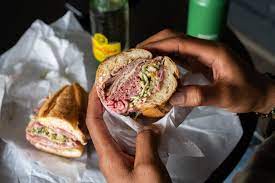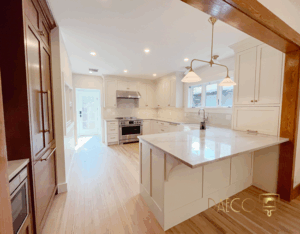First thing’s first, the position of the food matters a great deal—including how much of them appear in the shot. Sullivan tells us how he would approach photographing sushi differently than he would a sandwich: “If it’s two pieces of nigiri, I want to have some negative space,” he says. “I might have a little bit of the table and plate in there as reference, but the negative space to draw your attention to the nigiri is important.” Try adding more or less negative space as you shoot to find the right balance.
With something like a “sandwich, a steak, or even a donut,” he may take more of a lifestyle approach. “A drink, chips, some hands in the photograph might make sense. You can see the whole spread but your eye goes right to the sandwich.” Practice moving other objects around in the photos to figure out how they can support the main subject rather than distracting from it.
Variables like texture, height, and color demand consideration. The height of a sandwich might be better served by a lower angle to make it look towering. In the case of sushi, he advises to “meter for the fish, but you want to make sure you capture the texture of the rice.” Getting in close or adding some directional light from the side can help pull out those small details.
Techniques from other disciplines can help with food. “I approach food just like portraiture. In portraits, you want to focus on and flatter the eyes and pay attention to how shadows fall across someone’s face,” Sullivan says. Including the edge of a plate in front of the food can add depth, while the shadows created by the food provide texture.
Source : https://www.popsci.com/diy/best-food-photography-tip/








